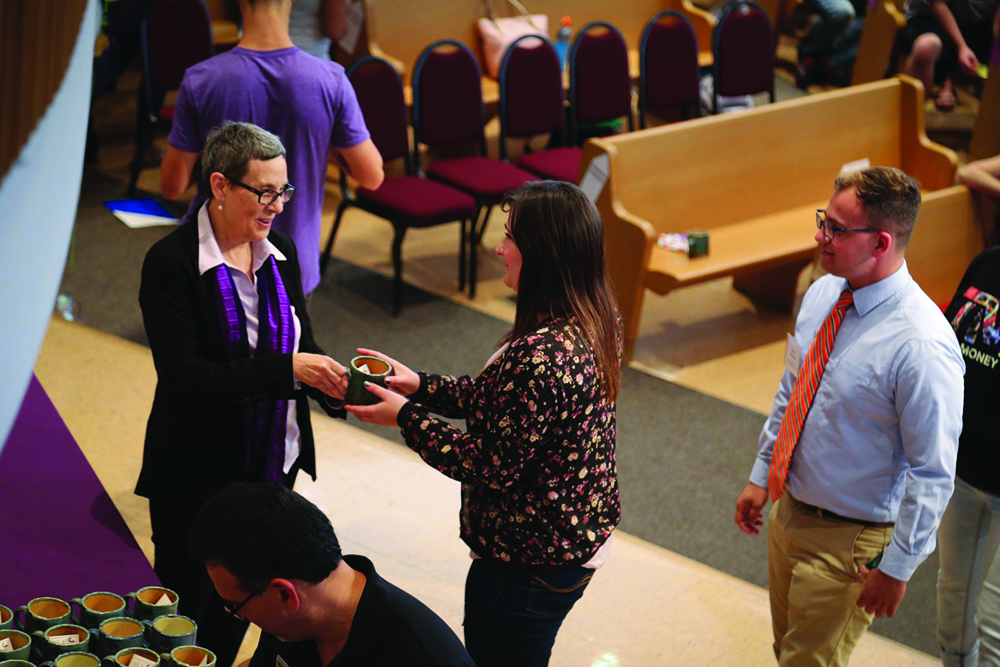During the first week of the fall semester some students, such as Mariah Ackerman, noticed a lack of paper being handed out in many classes in comparison to previous semesters.
“Some professors handed out printed copies of the syllabus and some told us that it was online,” Ackerman said.The change is a result of a suggestion of best practice handed down to faculty by Jo-Ann Brant, interim academic dean, in order to reduce paper usage on campus.
According to Brant, “There has always been an effort [at Goshen College] to reduce the usage of paper on campus wherever possible. This is both for ecological and economic reasons. Every year something was sent out regarding paper usage and people complied.”
But last year, Brant said, “something a little wonky happened.” The amount of photocopies soared, and the budget line for copying and printing ended up deeply in the red.
According to data obtained from ITS Media, 16,134,486 copies were made during the 2016-17 academic year, higher than the 15,554,459 copies made during the 2014-15 academic year. Regarding the 2015-16 academic year, there was a glitch in the print service causing a large number of copies to go unrecorded, so data is not accurate.
With every student and faculty having an iPad or a similar device, Brant said, “it seemed we really needed to recognize that we have made a significant investment in this technology and that we should not be producing copies of documents that could be shared electronically.”
Despite the encouragement to print less, Brant still recognizes that there are times in the classroom where paper is still necessary. If she were still in the classroom, Brant said, “I would definitely be using paper for purposes of students reporting back. Especially in the bigger lower level classes.”
Regarding printing at the student level, Brant said, “The preference on paper varies from student to student.” However, with the option of digital consumption of material, Brant thinks a critical point has been hit where the tendency has shifted from paper to digital.
Preference of using electronics over paper can be seen in comments from students like junior Nimoy Vaidaya. On the subject of note taking, Vaidaya said, “For one, typing is much faster than writing on paper.” Vaidaya mentioned he was brought up writing notes on paper rather than with a computer, and said that his note-taking improved once he switched to using a laptop.
Echoing Brant’s statement on students’ printing and paper usage preferences, students such as Ackerman can see that using less paper has a benefit. However, Ackerman stated that she is a visual learner, making it beneficial for her to “print things off such as a syllabus and have the ability to mark things off as needed.”
Since she is serving as academic dean for the current academic year, “[Paper reduction] is one of the things I wanted to encourage for best practices,” Brant said.
Professors such as Skip Barnett see the suggestion of best practice as part of the natural progression in campus operations. “Numerous profs were trying to move this way for a long time,” Barnett said. Having the dean speak to the issue will hasten something that “people have been shuffling to for years.”
It should be noted that this action is not in any way a policy, but according to Brant, “a suggestion regarding paper usage.”
“This is an easy way to make sure the budget is balanced by not doing excess printing,” she said.



